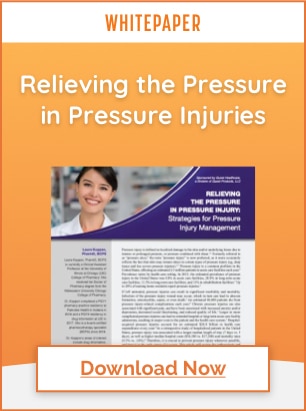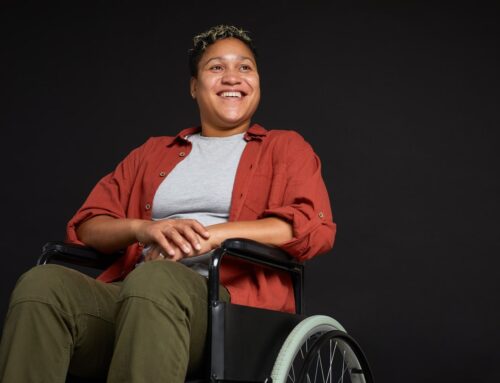
Correlation Between an Ineffective Bowel Program and Pressure Ulcers
According to John Hopkins Medicine, ulcers can develop if blood supply is cut off for more than 2 to 3 hours, and can progress rapidly. Sustained pressure can cut off circulation to vulnerable parts of the body, and without an adequate supply of blood, body tissues can die.
Populations at Increased Risk for Pressure Ulcers
Studies have found that individuals in long term care facilities, hospitals, and nursing homes, along with those who have spinal cord injury (“SCI”), Multiple Sclerosis, Spina Bifida, Traumatic Brain Injury, or other conditions that affect mobility have higher rates of pressure ulcers than the average population.
The above-listed conditions all share the likely symptom of increased incontinence. People who struggle with incontinence are 22 times as likely to develop pressure ulcers in a hospital setting as those who do not. Furthermore, people who experience incontinence along with mobility impairments have nearly a 40 percent higher chance of developing pressure ulcers than the average population.4
Pressure Ulcers Risk Factors
There are several factors that contribute to an increased risk of pressure ulcers among long-term care and nursing home residents, including:
- a recent weight loss (20% of patients were more likely to have pressure ulcers)
- high immobility (16% occurrence of pressure ulcers)
- polypharmacy, or taking more than eight medications (13% and 9% increased risk of pressure ulcers, respectively).
- recent bowel or bladder incontinence (12% more risk of pressure ulcers) 5
The Connection Between Mobility, Incontinence, and Pressure Ulcers
The connection between impaired mobility, incontinence, and pressure ulcers has multiple causes.
- If a patient with low mobility and/or pressure ulcer(s) has an uncontrolled bowel movement, it is likely that urine or feces will come into contact with raw skin, causing skin breakdown, irritation and/or dermatitis.
- Certain products, like stimulant laxatives, used to help patients with fecal incontinence can actually cause acute injury to rectal mucosa which exacerbates the problem.
- The process of sitting on a bowel chair/commode for long periods of time while trying to have a bowel movement can further contribute to pressure and to the transfer of bacteria onto compromised skin.
While there is little in the scientific literature directly linking time-to-evacuation during bowel care to the development of pressure ulcers, it is still reasonable to believe sitting for long periods of time on a commode chair, without the benefit of weight shifts, can result in serious tissue damage.
According to a self-reported survey completed by 1,238 veterans with SCI, 6% reported that their pressure ulcers were directly related to the use of neurogenic bowel management equipment.1
Safety, ease keeping the chair clean, lack of durability, and risk of pressure ulcers were commonly reported complaints.2
The duration of a patient’s bowel care program and the equipment used during bowel care have an impact on the occurrence of pressure ulcers, although new technology in bowel chair design and manufacture has been slower to evolve.
The Importance of an Effective Bowel Program for Patients with Impaired Mobility
For those with low mobility and incontinence, it is essential to implement an effective bowel program in order to prevent the formation of pressure ulcers. Effective bowel programs involve, among other factors, the shortest time possible for completion, increased fiber and water intake, consistent exercise, and a regulated schedule for attempting to pass stool.
An effective bowel program for people in nursing homes, those who have brain injuries, or those who have spinal injuries can help to retrain the bowels to pass stool at appropriate times. This, in turn, will help individuals experience less unwanted accidents that cause waste matter to come into contact with vulnerable skin.
Improved Quality of Life
Effective bowel programs also help patients spend less time sitting on a bowel chair trying to pass stool. With an effective program and the right laxative product(s), the process of passing stool eventually becomes easier to control and faster to complete. This increases a patient’s overall quality of life, independence, sense of wellbeing, and reduces the risk of pressure ulcers.
Pressure Ulcers are Costly to Institutions
While patient comfort and safety are the top priorities, it’s important to note that pressure ulcers can be costly to institutions as well. In a 2009 study, mean hospitalization charges were highest for skin conditions ($75,872).3
The Enemeez® and DocuSol® Advantage
The Enemeez® and DocuSol® mini-enema delivers 283mg of docusate sodium and functions as a stool softener hyper-osmotic laxative by drawing water into the bowel from surrounding body tissues, softening the stool and promoting a bowel movement.
Enemeez Plus and DocuSol® Plus both contain an additional 20mg of benzocaine, assisting in the anesthetization of the rectum and lower bowel. The formulation was developed for patients who experience hemorrhoids, fissures, or painful bowel movements.
>> CLICK HERE TO REQUEST SAMPLES OF ENEMEEZ® OR DOCUSOL® TODAY.
Disclaimer: The material contained is for reference purposes only. Alliance Labs, LLC and Summit Pharmaceuticals do not assume responsibility for patient care. Consult a physician prior to use. Copyright 2020 Summit Pharmaceuticals and Alliance Labs, LLC.
Resources:
1 Luther et al., 2002
2 Nelson, et al., 1993; Nelson, et al., 1994
3 DeVivo & Farris, TSCIR 2011, Vol 16:53-61
4 Maklebust and Magnan, 1994
Neurogenic Bowel Management: Secondary Complications and Quality of Life: Susan L. Garber, MA, OTR, FAOTA, FACRM
http://www.hopkinsmedicine.org/healthlibrary/conditions/dermatology/bedsores_85,P00260/




![[Live Webinar] Neurogenic Bowel Dysfunction in Multiple Sclerosis](https://www.questhealthcare.net/wp-content/uploads/2025/02/325-Quest-Healthcare-Speaker-Session-1-500x383.png)


